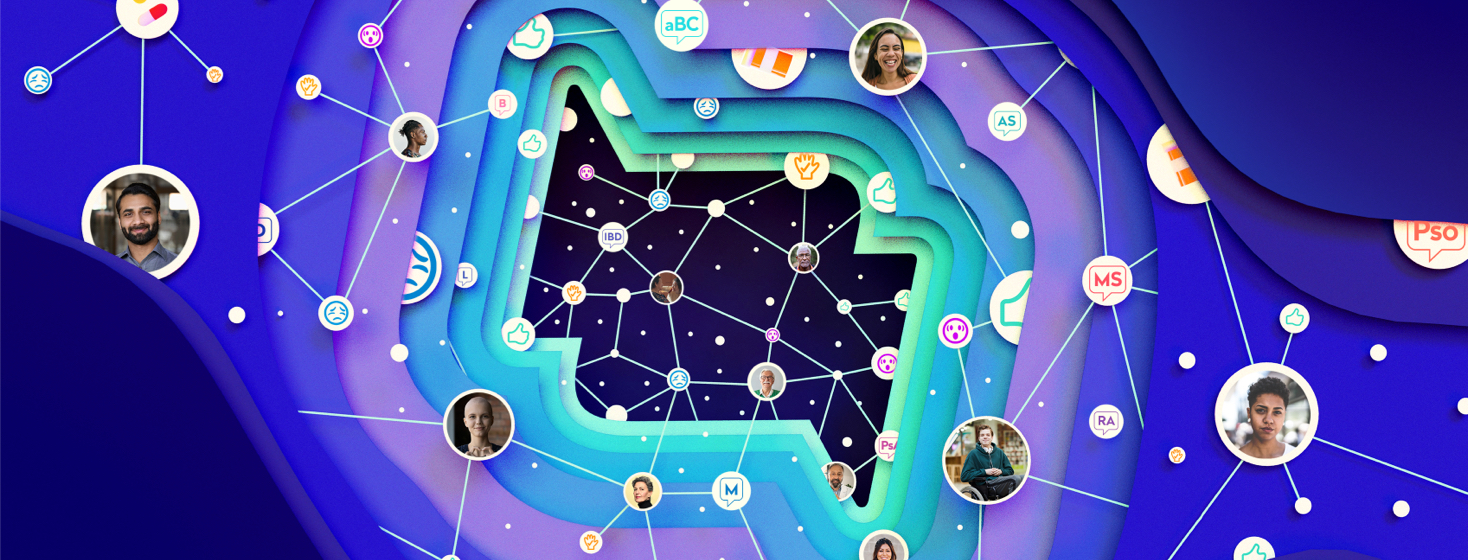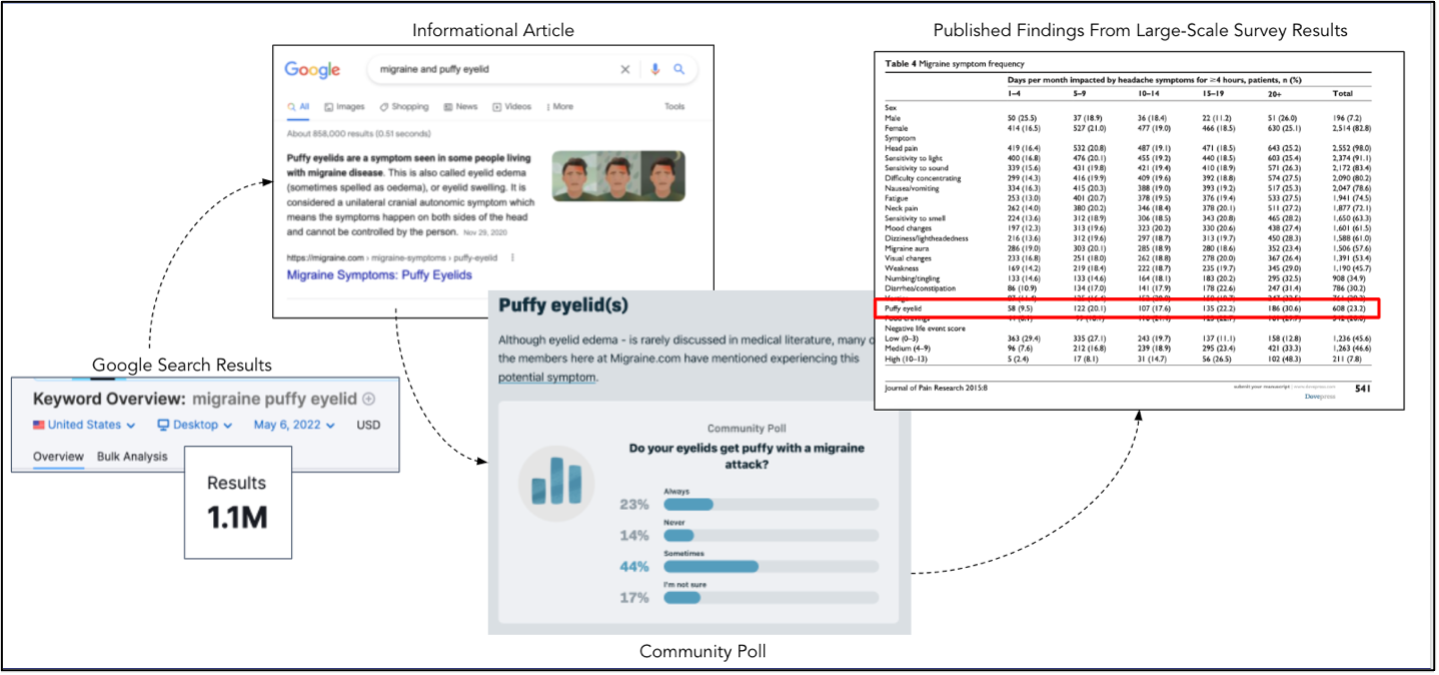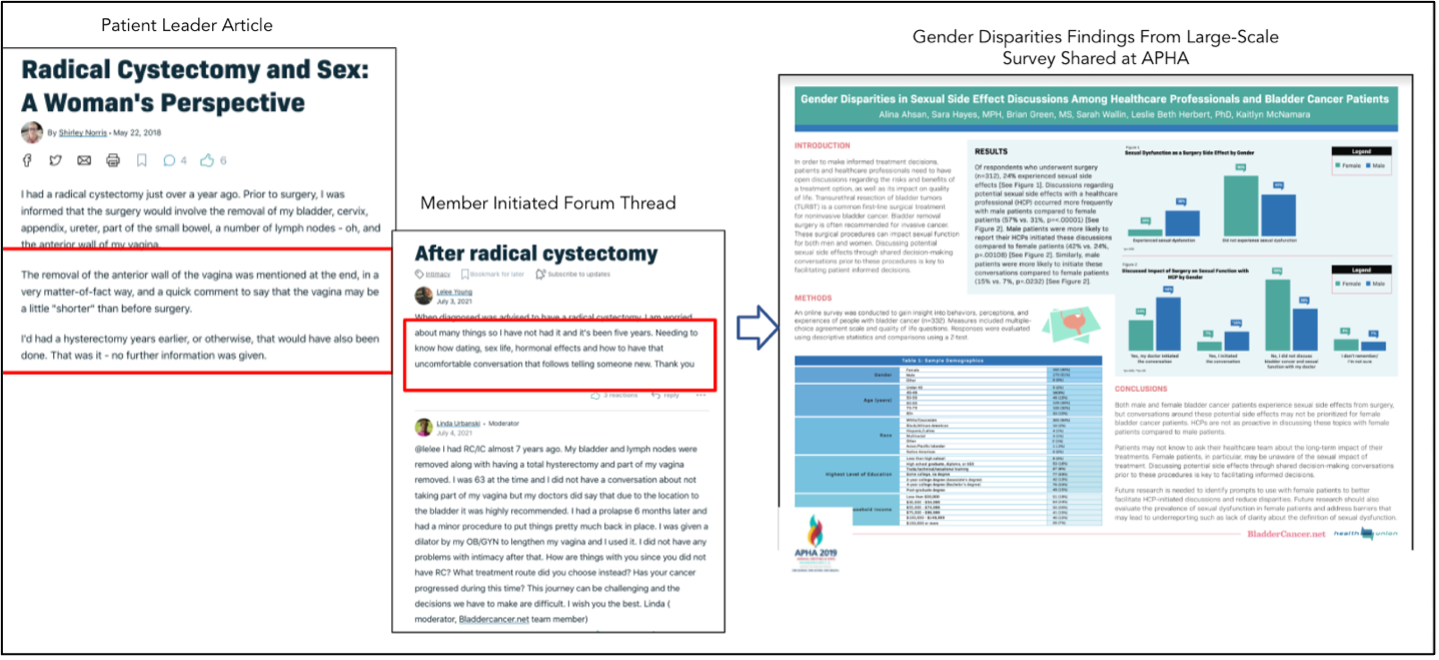Case Studies – Community Conversations Uncover Unmet Needs
Mystery Symptoms – Despite high search rates for the terms “migraine” and “puffy eyelid,” we noticed there was a lack of patient resources on the topic and few scientific publications noting eyelid edema as a common migraine symptom. After creating content to fill the information gap for patients, results from a simple poll suggested that a large percentage of Migraine.com visitors were experiencing this symptom. When included as a potential symptom in Health Union’s large-scale Migraine in America survey of over 5,000 respondents, findings demonstrated that 23% of patients experienced eyelid edema as a migraine symptom, confirming that it was a common, yet overlooked, symptom. These findings were then published in a peer-reviewed journal.
Disparites in Care – Sexual side effects from bladder cancer surgery represented a frequent topic of discussion among women in the BladderCancer.net community. Most notably, many of these women were surprised by the side effects and didn’t feel they were adequately prepared prior to surgery. As a result of the discussions, we asked over 300 patients in our Bladder Cancer In America survey about their experience with surgery. Results showed that discussions regarding potential sexual side effects with an HCP occurred more frequently with male patients compared to female patients. These consequential findings were presented at the American Public Health Association’s annual conference in 2019.
Health Union’s online health communities have proven to be an impactful and useful resource in the overall experience of people living with chronic health conditions and helping them achieve better health outcomes. Our social learning communities have demonstrated the value of meaningful human engagement, and the opportunities it creates to help grow tacit knowledge and drive innovation are limitless.







